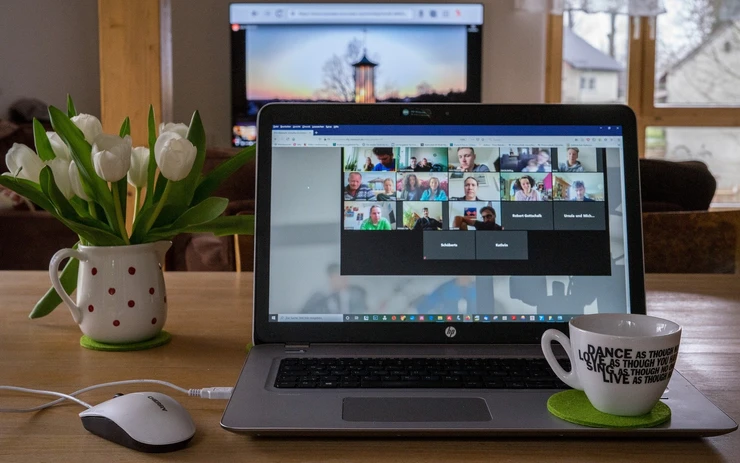Tips For Impactful & Purposeful Event Planning
In today’s world, successful events are those that go beyond just meeting business objectives—they’re about making a difference. At MLM Consulting, we believe that every event presents a unique opportunity to give back to the community. Whether you’re planning a corporate conference, a small association meeting, or a nonprofit fundraiser, integrating Corporate Social Responsibility (CSR) into your event planning process can create a lasting, positive impact. Here are our top tips for creating events that truly give back to the community.
One thing about virtual events is that it can be very easy to forget you have an audience you need to engage and entertain. After all, you’re sitting at home alone right? It’s easy to hide behind the screen and forget there are people on the other side. There are so many little things you can do to make sure your virtual meeting is more engaging.
Here are our top tips for running an engaging virtual meeting that will create impact for your company!
1. Engage with the Local Community
One of the most effective ways to make your event impactful is by actively engaging with the local community. This can include partnering with nonprofit organizations, supporting small businesses, or organizing community volunteer opportunities as part of your event. At MLM Consulting, we prioritize these connections to ensure that our events have a direct and meaningful impact on the areas where they are held. By focusing on local engagement, you not only contribute to the community’s well-being but also foster a sense of shared purpose among event attendees.
Tip: Consider incorporating local talent, suppliers, and vendors into your event to support the local economy and create a more authentic experience.
2. Prioritize Sustainability
Incorporating sustainable practices into your event is another powerful way to give back. Events can have a significant environmental impact, so it’s crucial to minimize this through careful planning. MLM Consulting is committed to promoting sustainability in every event we plan. From selecting eco-friendly venues to reducing waste and encouraging the use of renewable resources, we help our clients create events that are not only successful but also kind to the planet.
Tip: Opt for digital invitations, reusable materials, and eco-friendly giveaways to reduce your event’s carbon footprint.
3. Foster Inclusivity and Diversity
Creating an event that is inclusive and reflective of diverse perspectives is key to making a meaningful impact. Inclusivity not only enriches the experience for all attendees but also demonstrates a commitment to social responsibility. At MLM Consulting, we ensure that our events celebrate diversity, incorporating a wide range of voices and experiences in everything from programming to vendor selection.
Tip: Ensure your event is accessible to everyone, including individuals with disabilities, and consider the diverse needs of your audience in all aspects of planning.
4. Create Long-Lasting Impact
The true measure of an event’s impact is what happens after it’s over. At MLM Consulting, we believe in creating events that leave a lasting legacy. This could mean establishing ongoing partnerships with nonprofit organizations, setting up continuous community engagement efforts, or implementing sustainability initiatives that last beyond the event. By focusing on long-term impact, you ensure that your event’s benefits extend far beyond the day itself.
Tip: Consider setting up a follow-up campaign or initiative that keeps the momentum of your event going, such as a community support program.
5. Incorporate Educational Elements
An impactful event doesn’t just involve giving back; it also educates and inspires attendees to continue making a difference. At MLM Consulting, we often incorporate educational elements into our events, such as workshops, panel discussions, or keynote speeches focused on community issues, sustainability, or social responsibility. These elements not only add value to your event but also empower attendees to take action in their own lives.
Tip: Invite speakers who are experts in CSR-related topics to share their insights and inspire your audience to think about their own role in giving back.
6. Leverage Technology for Greater Impact
Technology can play a significant role in amplifying the impact of your event. From virtual fundraising platforms to social media campaigns, there are numerous ways to leverage technology to engage a wider audience and increase the reach of your event’s message. At MLM Consulting, we use the latest technology to enhance our events, ensuring that our clients can connect with their audience in meaningful and innovative ways.
Tip: Use live streaming to broadcast your event to a broader audience, or create a social media campaign that encourages attendees and followers to share their experiences and spread the word.
7. Recognize and Reward Contributions
Finally, recognizing and rewarding the contributions of those involved in your event—whether they’re volunteers, sponsors, or attendees—can make a significant impact. At MLM Consulting, we believe in celebrating the efforts of everyone who helps make an event successful. This not only fosters a sense of community but also encourages ongoing involvement and support.
Tip: Consider creating awards or recognition programs for those who go above and beyond in contributing to your event’s success, highlighting their efforts during the event to inspire others.
Partnering with MLM Consulting for Meaningful Events
When you choose MLM Consulting, you’re not just planning an event—you’re creating a platform for positive change. Our expertise in CSR-focused event planning means that your event will not only meet your business objectives but also give back to the community in meaningful ways. We work closely with you to understand your values and goals, and we tailor our approach to ensure that your event reflects your commitment to making a difference.
Whether you’re planning a corporate event that enhances your brand’s reputation, a nonprofit fundraiser that deeply engages the community, or a small association meeting that promotes inclusivity, MLM Consulting is here to help. We are passionate about creating events that matter, and we are committed to partnering with you to make your next event a powerful force for good.
Let’s work together to make your next event both purposeful and impactful!
Share This Post
Explore More Relevant blog Posts

How to Plan the Ultimate Holiday Party for Your Team
The holiday season offers a perfect opportunity to celebrate achievements, foster camaraderie, and show appreciation for your team’s hard work. However, creating a successful corporate

Gratitude In Business: How to Show Appreciation to Clients & Partners
Planning and executing a corporate event is no small feat, but with the right tools, you can ensure everything runs smoothly. From setting up equipment







